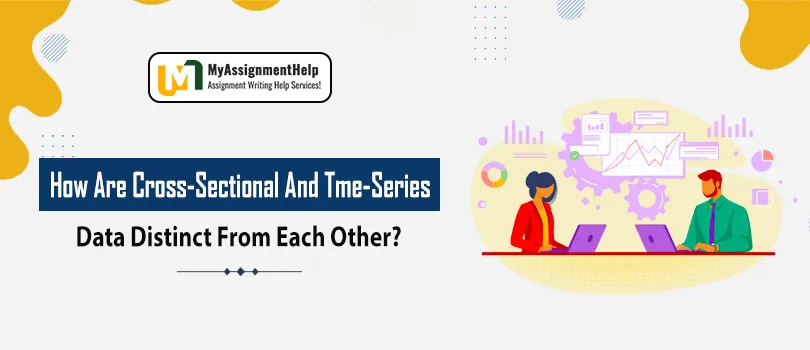In the realm of data analysis and statistical modeling, two primary types of data play pivotal roles: cross-sectional and time-series data. Both serve distinct purposes and offer unique insights into various phenomena. Understanding the disparities between these two types of data is fundamental for researchers, analysts, and students alike. In this article, we delve into the essence of cross-sectional and time-series data, highlighting their disparities, applications, and significance in academic and real-world contexts.

Cross-Sectional Data: Snapshot Across Different Entities
Cross-sectional data provide an overview of several entities at one particular moment in time. It essentially involves the collection of observations from various individuals, groups, or entities, with each observation representing a unique unit at a particular moment. These units can be individuals, households, companies, countries, or any other defined entity.
For instance, in a cross-sectional study examining income levels across different demographics, researchers might collect data from individuals belonging to various age groups, genders, and socioeconomic backgrounds at a specific point in time with the assignment writing. Each observation provides insights into the income level of a distinct individual within the sampled population.
The analysis of cross-sectional data typically involves comparing characteristics or variables across different entities to discern patterns, correlations, or disparities. Common statistical methods employed include regression analysis, hypothesis testing, and correlation analysis. Cross-sectional data finds widespread application in social sciences, economics, market research, and public health studies.
Time-Series Data: Unveiling Trends Over Time
On the contrary, time-series data entails the collection of observations over successive intervals of time. Each observation represents the value of a variable at a specific time point, thereby enabling the examination of trends, patterns, and fluctuations over time.
For instance, in analyzing stock market performance, time-series data would involve collecting daily, weekly, or monthly stock prices over a defined period. By plotting these values against time, analysts can identify trends, seasonal patterns, and cyclical fluctuations in the market.
Time-series data facilitates the detection of temporal dependencies, autocorrelation, and the impact of interventions or external factors over time. Statistical techniques such as autoregression, moving averages, and time-series decomposition are commonly employed to analyze and forecast time-series data. This type of data finds applications in finance, economics, environmental studies, epidemiology, and engineering, among other fields.
Distinguishing Features And Applications
While both cross-sectional and time-series data serve as indispensable tools for analysis, they exhibit distinct characteristics and cater to different analytical needs.
- Temporal Dimension: The primary disparity lies in their temporal dimension. Cross-sectional data offers a snapshot view across different entities at a specific point in time, whereas time-series data tracks changes in variables over successive time intervals.
- Analytical Goals: Cross-sectional data is often utilized to compare characteristics or variables across different groups or entities, elucidating patterns or relationships at a particular moment. Conversely, time-series data aims to uncover temporal trends, seasonality, and dependencies within a single entity or system over time.
- Statistical Techniques: The analytical methods employed for each type of data differ significantly. While cross-sectional data analysis revolves around comparative statistics and hypothesis testing, time-series analysis encompasses specialized techniques tailored to address temporal dependencies and forecast future trends.
In academic and professional settings, proficiency in analyzing both cross-sectional and time-series data is crucial for conducting comprehensive research, making informed decisions, and formulating effective strategies. Students often encounter assignments and coursework that require proficiency in handling both types of data, necessitating assistance from coursework experts or online assignment help services.
Conclusion
In conclusion, time series vs cross sectional data represent distinct yet complementary approaches to data analysis. While cross-sectional data offers a snapshot view across different entities at a specific moment, time-series data tracks changes in variables over successive time intervals, unveiling temporal trends and dependencies. Understanding the disparities between these two types of data is essential for researchers, analysts, and students alike, enabling them to leverage the appropriate analytical tools and techniques to derive meaningful insights from diverse datasets.





